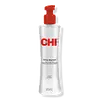What's inside
What's inside
 Key Ingredients
Key Ingredients

 Benefits
Benefits

 Concerns
Concerns

 Ingredients Side-by-side
Ingredients Side-by-side

Water
Skin ConditioningDimethicone
EmollientCyclotetrasiloxane
EmollientGlycerin
HumectantPolysilicone-15
UV FilterPolysilicone-19
Parfum
MaskingHydrolyzed Silk
HumectantTocopheryl Acetate
AntioxidantSymphytum Officinale Leaf Extract
Skin ConditioningAnthemis Nobilis Flower Extract
MaskingMentha Piperita Leaf Extract
Skin ConditioningLavandula Angustifolia Extract
Skin ConditioningSalvia Sclarea Extract
AntiseborrhoeicDimethiconol
EmollientAmodimethicone
Cetrimonium Chloride
AntimicrobialTrideceth-8
EmulsifyingCyclopentasiloxane
EmollientPanthenyl Hydroxypropyl Steardimonium Chloride
Sodium Polyacrylate
AbsorbentTrideceth-6
EmulsifyingPEG/PPG-18/18 Dimethicone
EmulsifyingPhenoxyethanol
PreservativeMethylisothiazolinone
PreservativeLinalool
PerfumingCoumarin
PerfumingLimonene
PerfumingWater, Dimethicone, Cyclotetrasiloxane, Glycerin, Polysilicone-15, Polysilicone-19, Parfum, Hydrolyzed Silk, Tocopheryl Acetate, Symphytum Officinale Leaf Extract, Anthemis Nobilis Flower Extract, Mentha Piperita Leaf Extract, Lavandula Angustifolia Extract, Salvia Sclarea Extract, Dimethiconol, Amodimethicone, Cetrimonium Chloride, Trideceth-8, Cyclopentasiloxane, Panthenyl Hydroxypropyl Steardimonium Chloride, Sodium Polyacrylate, Trideceth-6, PEG/PPG-18/18 Dimethicone, Phenoxyethanol, Methylisothiazolinone, Linalool, Coumarin, Limonene
Water
Skin ConditioningPEG-12 Dimethicone
Skin ConditioningQuaternium-80
Polysorbate 20
EmulsifyingCetrimonium Chloride
AntimicrobialHydrolyzed Keratin
HumectantPanthenol
Skin ConditioningPhenoxyethanol
PreservativeCaprylyl Glycol
EmollientHexylene Glycol
EmulsifyingPotassium Sorbate
PreservativeHydrolyzed Silk
HumectantCitric Acid
BufferingSymphytum Officinale Leaf Extract
Skin ConditioningAnthemis Nobilis Flower Extract
MaskingMentha Piperita Leaf Extract
Skin ConditioningLavandula Angustifolia Extract
Skin ConditioningSalvia Sclarea Extract
AntiseborrhoeicParfum
MaskingBenzyl Benzoate
AntimicrobialButylphenyl Methylpropional
PerfumingHydroxyisohexyl 3-Cyclohexene Carboxaldehyde
MaskingHexyl Cinnamal
PerfumingSilica
AbrasiveAlumina
AbrasiveTitanium Dioxide
Cosmetic ColorantCI 19140
Cosmetic ColorantCI 16035
Cosmetic ColorantWater, PEG-12 Dimethicone, Quaternium-80, Polysorbate 20, Cetrimonium Chloride, Hydrolyzed Keratin, Panthenol, Phenoxyethanol, Caprylyl Glycol, Hexylene Glycol, Potassium Sorbate, Hydrolyzed Silk, Citric Acid, Symphytum Officinale Leaf Extract, Anthemis Nobilis Flower Extract, Mentha Piperita Leaf Extract, Lavandula Angustifolia Extract, Salvia Sclarea Extract, Parfum, Benzyl Benzoate, Butylphenyl Methylpropional, Hydroxyisohexyl 3-Cyclohexene Carboxaldehyde, Hexyl Cinnamal, Silica, Alumina, Titanium Dioxide, CI 19140, CI 16035
Ingredients Explained
These ingredients are found in both products.
Ingredients higher up in an ingredient list are typically present in a larger amount.
Anthemis Nobilis Flower Extract is from the Roman Chamomile flower. It helps soothe the skin and contains antioxidants.
This ingredient is a preservative, antimicrobial, and emulsifier. It is often used in cosmetics for its ability to cleanse, condition, and reduce static.
Cetrimonium chloride is a quaternary ammonium salt, meaning it has a water-soluble structure.
You can find hydrolyzed silk in both haircare and skincare products. According to a manufacturer, it can help improve skin and hair hydration.
This ingredient is created by adding acid or enzymes to 'hydrolyze' silk protein.
Due to the origins of this ingredient, it is not vegan. Silk is an animal product from silkworms.
Depending on the source, this ingredient can be considered cruelty-free. It is created from left-over cocoons of silkworms. We recommend reaching out to the brand if you have questions about where their hydrolyzed silk comes from.
Learn more about Hydrolyzed SilkLavandula Angustifolia Extract comes from the lavender flower. Lavandula Angustifolia is known as the English Lavender and famous for creating purple fields in Provence, France.
Lavandula Angustifolia Extract has anti-inflammatory properties due to its prostanoids and histamine content. Lavender also contains flavonoids and phenolic acids (such as ferulic acid), potent antioxidants.
Lavender extract may have a scent. It contains linalool, a known allergen. However, lavender extract contains less linalool than lavender essential oil.
Learn more about Lavandula Angustifolia ExtractMentha Piperita Leaf Extract is extract from peppermint leaves.
Studies show peppermint extract have antimicrobial properties against some bacteria and fungi.
In large percentages, peppermint extract may sensitize the skin.
Learn more about Mentha Piperita Leaf ExtractParfum is a catch-all term for an ingredient or more that is used to give a scent to products.
Also called "fragrance", this ingredient can be a blend of hundreds of chemicals or plant oils. This means every product with "fragrance" or "parfum" in the ingredients list is a different mixture.
For instance, Habanolide is a proprietary trade name for a specific aroma chemical. When used as a fragrance ingredient in cosmetics, most aroma chemicals fall under the broad labeling category of “FRAGRANCE” or “PARFUM” according to EU and US regulations.
The term 'parfum' or 'fragrance' is not regulated in many countries. In many cases, it is up to the brand to define this term.
For instance, many brands choose to label themselves as "fragrance-free" because they are not using synthetic fragrances. However, their products may still contain ingredients such as essential oils that are considered a fragrance by INCI standards.
One example is Calendula flower extract. Calendula is an essential oil that still imparts a scent or 'fragrance'.
Depending on the blend, the ingredients in the mixture can cause allergies and sensitivities on the skin. Some ingredients that are known EU allergens include linalool and citronellol.
Parfum can also be used to mask or cover an unpleasant scent.
The bottom line is: not all fragrances/parfum/ingredients are created equally. If you are worried about fragrances, we recommend taking a closer look at an ingredient. And of course, we always recommend speaking with a professional.
Learn more about ParfumPhenoxyethanol is a preservative that has germicide, antimicrobial, and aromatic properties. Studies show that phenoxyethanol can prevent microbial growth. By itself, it has a scent that is similar to that of a rose.
It's often used in formulations along with Caprylyl Glycol to preserve the shelf life of products.
We don't have a description for Salvia Sclarea Extract yet.
We don't have a description for Symphytum Officinale Leaf Extract yet.
Water. It's the most common cosmetic ingredient of all. You'll usually see it at the top of ingredient lists, meaning that it makes up the largest part of the product.
So why is it so popular? Water most often acts as a solvent - this means that it helps dissolve other ingredients into the formulation.
You'll also recognize water as that liquid we all need to stay alive. If you see this, drink a glass of water. Stay hydrated!
Learn more about Water